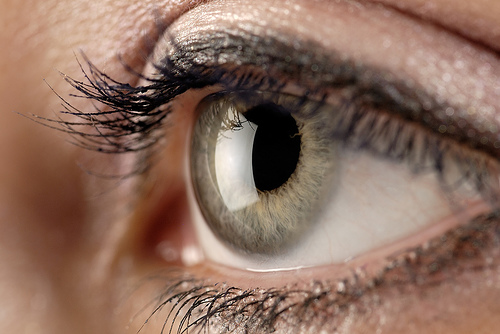As science marches on, the miraculous cures that past ages dreamed of are slowly becoming reality. We’re gaining the ability to engineer new body parts, like windpipes and bladders, outside a person’s body and successfully transplant them to replace a damaged or cancerous organ. Bionic exoskeletons to let paralyzed people walk again are becoming commercially available. And this month, the FDA approved the first artificial retina, designed to restore limited vision to people with certain kinds of blindness:
The artificial retina is a sheet of electrodes implanted in the eye. The patient is also given glasses with an attached camera and a portable video processor. This system, called Argus II, allows visual signals to bypass the damaged portion of the retina and be transmitted to the brain.
With the artificial retina or retinal prosthesis, a blind person cannot see in the conventional sense, but can identify outlines and boundaries of objects, especially when there is contrast between light and dark — fireworks against a night sky or black socks mixed with white ones.
The implant is designed as a treatment for retinitis pigmentosa, a degenerative disease of the eye’s photoreceptor cells. The patient wears a pair of glasses with a tiny attached video camera, which transmits an image to an implanted chip that sends signals to undamaged nerve cells. The doctors who designed it speculate that in the future, they may be able to implant the electrodes directly in the brain rather than the eye, expanding the range of conditions it can treat.
Right now, the artificial retina has only 60 pixels, with just a 20-degree field of view: enough to sense the edges of objects or read large print. It’s not much, though it’s a major improvement over total blindness. But this is the very beginning of this technology, like comparing the first generation of Apple II computers to today’s desktop PCs. A new version with 200 pixels is already being developed, as is one with light-sensitive photodiodes on the implant itself, eliminating the need to wear an external camera. In 10 to 20 years, I’m betting, we’ll be able to build artificial retinas that restore vision as good as that of a person with an undamaged retina, making blindness a temporary inconvenience rather than a lifelong deficit.
And why stop there? The possibilities of this technology are enormous. Why not build an artificial retina with night vision, or with sensors that detect infrared or ultraviolet light? What if we built one that had four different kinds of color receptors, rather than the three kinds that human beings have – could the brain learn to use that information and turn people into artificial tetrachromats? Would they be able to see new colors that the rest of us couldn’t?
In 40 to 50 years, I’d predict, we’ll have retinal implants better than the human eye, so much so that healthy people will choose to get them just to improve their vision. It’s going to be a strange new world when the limitations of biology no longer constrain us, but it may be here sooner than we think.
